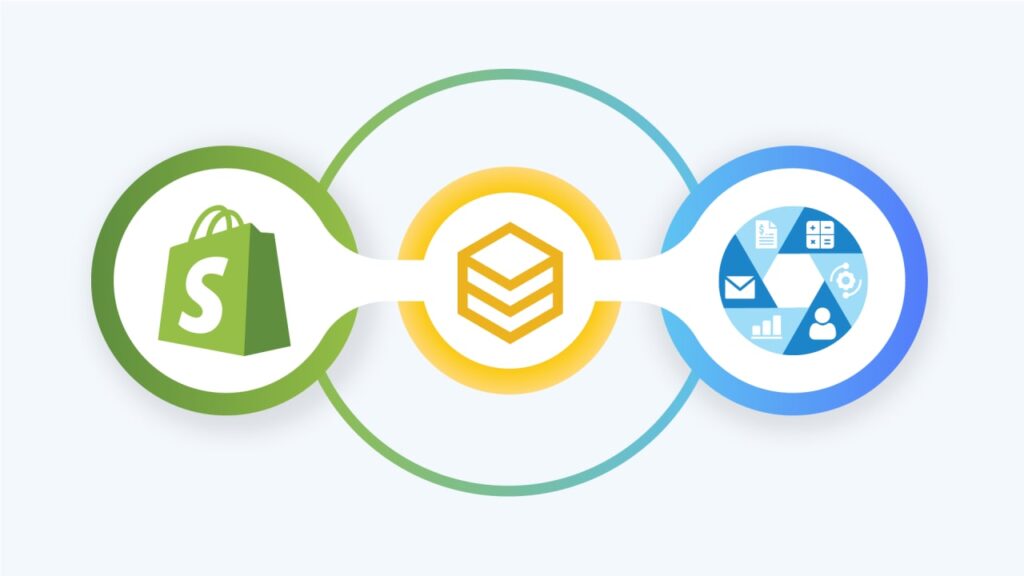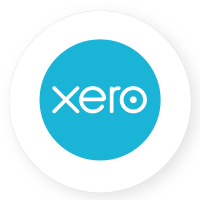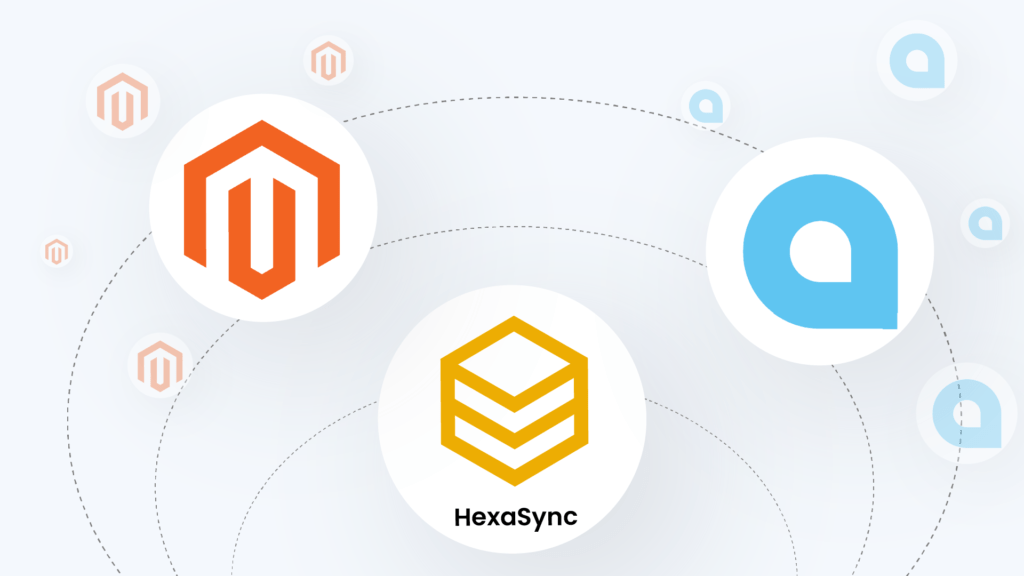As an eCommerce entrepreneur, especially a beginner, selecting place(s) for your warehouse is problematic. You wonder if your budget is enough or how to manage it effectively. Putting ourselves in your shoe, we know about your difficulty because many people ask about related problems. Therefore, in this article, we want to recommend and compare Amazon FBA vs Shopify Dropshipping to iron out your difficult situation.
Table of Contents
What is Shopify Dropshipping?
Dropshipping is a business model where merchants don’t need to purchase the warehouse. In other words, they place an order from third-party suppliers as customers. Then, the items are delivered directly to their customers at a price shown on the website. Hence, sellers only focus on product promotion to engage as many customers as possible and care for them without worrying about a place to keep products.
Many platforms support this business model with effective cost and simple use; you can choose one to build your Dropshipping store. While some people prefer Magento or OpenCart because of its optimized features, others choose Shopify for its ease of use. Magento OpenCart is designed for merchants with code knowledge to create and customize their websites. With Shopify, in contrast, the sellers only use drag-and-drop features to build the stores.
In this comparison post, we will introduce Shopify Dropshipping to find its pros and cons compared to Amazon FBA. If you are new to this, you can overview related Shopify Dropshipping articles. We showed the definition, how to start, strategies, the list of quality suppliers, etc.
What is Amazon FBA?
Amazon FBA (Fulfillment by Amazon) is an eCommerce service provided by Amazon to list and sell your products. As you may know, over 200 million unique monthly customers are shopping with Amazon. Therefore, when you start to open your store, you already have a huge size of sales. You need to plan promotional strategies to stand out from the competition.
As a seller, Amazon warehouse is yours; you can add the available products on the main website for sale and send your inventory to one of Amazon’s warehouses. Amazon will pick, pack, and ship directly to the customers when they buy your items, similar to Dropshipping. Moreover, Amazon is good at customer service and a return policy; they will take care of your customer as their own. So this is the reason why Amazon has become a reputable marketplace for online shopping.
In the next section, we will compare Amazon FBA vs. Shopify Dropshipping to find its advantages and disadvantages. After all, you can make an accurate decision about inventory position.
The main differences between Amazon FBA vs Shopify Dropshipping
You already know an overview of Amazon FBA and Shopify Dropshipping, such as the definitions, workflows, the most highlighted features, etc. Now, let’s take a closer look at the similarities and differences between both business models.
Amazon FBA vs Shopify Dropshipping: Similarities
First of all, both platforms offer various options to create a seller account, so it’s easy to sign up and build your online store. You may immediately upload your items on the main page after signing up for an account if you sell on Amazon. Then, whenever the customers place an order, Amazon will perform its obligation. Besides, you can select one from 5 Shopify plans based on your budget. Finding products and reputable suppliers is the next step, listing them for sale on your store website.
Moreover, both platforms offer 24/7 support, Amazon’s Help & Customer Service and Shopify Help Center, where they provide all information as needed. They are always available to respond to your email and give you a couple of suggestions or solutions. Therefore, you will find it easier to sell on these platforms.
Amazon FBA vs Shopify Dropshipping: Cost
Increasing profits is the leading Amazon goal, so the fulfillment by Amazon service requests various fees such as storage and fulfillment fees, long-term fees, seller fees, additional service charges, etc.
There are two options for seller accounts to create an online store on Amazon. If your units are less than 40 per month, you should choose the individual seller’s option($0.99 per item). However, if you sell unique items or private label products, the professional seller’s option ($39.9 per month) is better.
Depending on the product types, sizes, or stocking time, for example, whether it’s dangerous goods products or not, standard-size or oversize items, you have to pay $0.53 to $3.63 per cubic foot. Moreover, you have to pay an extra fee for items kept for more than 6 months. Via the example chart below, you can see more detail about long-term fees.
Amazon will help you fulfill the items and directly ship them to the customers when someone orders them. It is, of course, not free; Amazon will charge an extra amount of $2.92 to $93.94. This fulfillment fee is calculated by the item’s type, size, and weight. These are some basic fees you need to pay when selling on Amazon; please refer to the Selling on Amazon fees guide for more details.
On the other hand, Shopify only requests the plan cost to create a Dropshipping store, the customer payment method, and an extra transaction fee. Shopify offers 3 main plans that cost from $29 to $299 per month for your reference based on your need. When customers make an order, they need to be charged the payment fee. The chart below will show more details.
Amazon FBA vs Shopify Dropshipping: Revenue – Profit
As we mentioned, over 200 million people shop through Amazon monthly, which is the perfect place to sell your products. So, your store might engage a huge number of potential customers and get nearly 100 orders each day. In fact, there are more than 200,000 online stores that have more than $100,000 in sales. Also, there are about 25,000 sellers that make over $1 million on Amazon.
Moreover, thanks to Amazon’s marketing & SEO strategies, your products can engage millions of customers via keywords. You only need to focus on product development to stand out from the competition. As a result, you can optimize your profit for your business.
For Shopify Dropshipping, you only have an initial online sales page, but it doesn’t matter. Your store profits are based on your Dropshipping suppliers and product marketing strategies. If you contact someone who offers products at competitive prices and good delivery services, you will save a lot of money. Shopify also offers various applications and add-ons from Shopify Apps Store for Marketing and SEO. You should refer to experienced Dropshippers to learn from a couple of lessons.
Amazon FBA vs Shopify Dropshipping: Branding
Your brand might be known worldwide thanks to Amazon’s reputation. They make sure that your customers receive the items as quickly as possible and take care of the customers as needed. Besides, Amazon will gather all sellers with the same item into a single page to facilitate customer shopping. If you win the Buy Box, you will have additional opportunities to attract new customers. However, Amazon requests you follow the packing and delivery standards and the Amazon logo. Therefore, it’s pretty difficult to expand your brand.
Unlike Amazon, you can partner with your Shopify Dropshipping suppliers to extend your brand at all customer journey points. The items will be delivered to your customers and dispatched by providers, including your logo, color, and typography. However, to stand out from competitors, you need to put a lot of effort into Marketing & SEO strategies. Competing to find good product resources at the lowest cost possible and applying effective applications.
Amazon FBA vs Shopify Dropshipping: Storage – Transportation
As we mentioned above, the Dropshippers will sell third-party products at the Shopify store without keeping them in stock. You only need to list the items on the website and make the orders from your suppliers, who pack and ship them directly to your customers. Therefore, contacting quality suppliers is very important because it directly affects your brand. In contrast, the FBA sellers will sell their products on the Amazon website. Amazon also offers shipping standards; they support delivering the items within 4 days of business. So, you need to prepare and ship the items into the warehouse in the easiest way possible.
Amazon FBA vs Shopify Dropshipping: Policy
Please, keep in mind that you must follow Amazon company’s rules. Otherwise, your seller account can be suspended. For instance,
-
- If you have more than one account, you must ask Amazon for permission.
-
- The fake reviews will be cracked down.
-
- Amazon will ban your account if your items receive a lot of complaints.
-
- If you violate intellectual property law, you will not be able to continue to log in to sell
However, for Shopify Dropshipping Suppliers, you won’t have to be concerned about it. Before signing a contract, try negotiating with Dropship suppliers about the necessary information. The reputable providers will hesitate to provide everything you need to support your Dropshipping business.
Final Words
In summary, each model has different advantages and disadvantages that might support your sale. Although Amazon requires various fees, it facilitates more opportunities for beginners thanks to its revenue benefit and available customers. Furthermore, getting started to sell on Shopify does not cost much, but you should apply the correct business methods to optimize your profits. Via Amazon FBA vs Shopify Dropshipping comparison, we hope you can find some valuable information. If you have any questions, feel free to contact us.




















































